Rindo-bashi Bridge (1)
There is a pedestrian bridge called “Rindo-bashi Bridge” in Ueda City, Nagano Prefecture.
The bridge was registered as a tangible cultural property in March of this year.
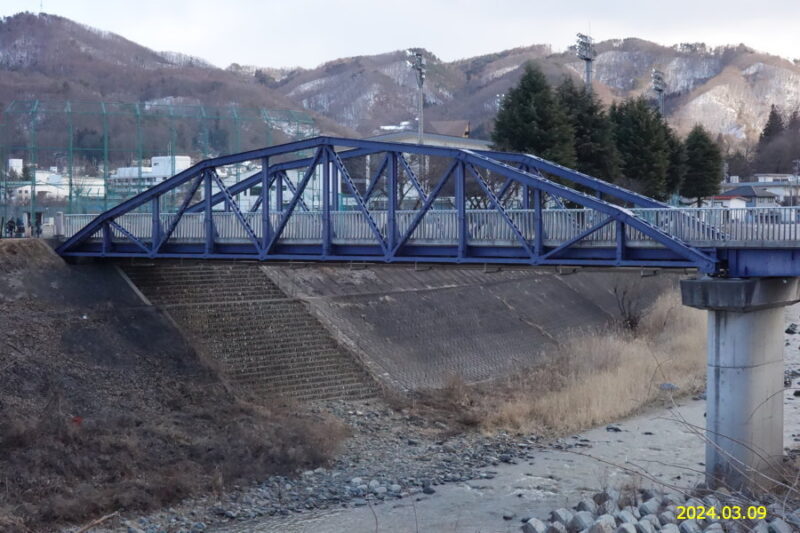
When I heard the news, I actually had no idea where the Rindo-bashi Bridge was located. Although I thought I had been reading up on modern architecture to a certain extent, I had not even been able to grasp the information within the prefecture.
I checked and found that the bridge was originally located in a different place, but was moved to its current location in 2007.
Ueda City held a lecture on March 9 to commemorate the registration of Rindo-bashi Bridge as a tangible cultural property. Since application for participation was not required, I went to the lecture. The venue was the Ceres Hall, Maruko Cultural Center.
Before the lecture began, I took a photo of the stage.
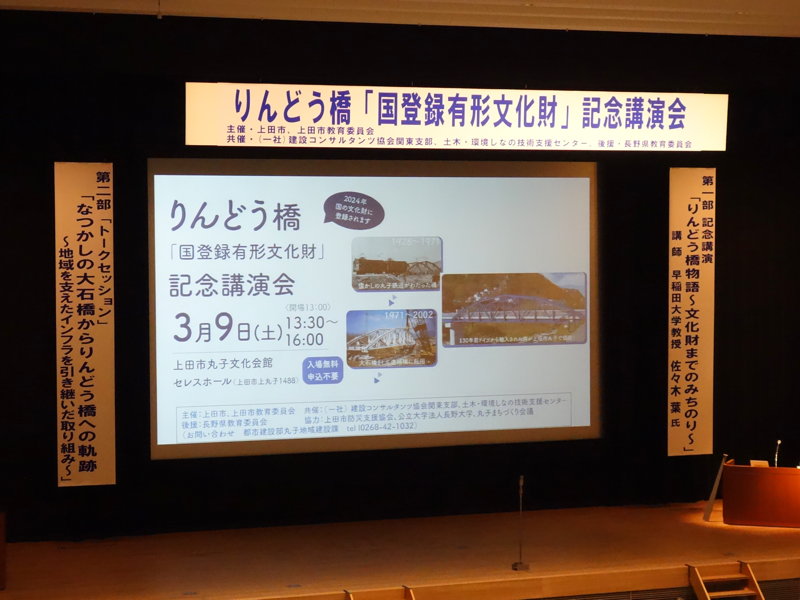
As it is a registered tangible cultural property, the Rindo-bashi Bridge has a long history.
Let me write about the history of the bridge based on what was said at the lecture.
First of all, the current location of the Rindo Bridge and the former location are circled on the map. The “Chikumagawa Bridge” indicates the former location.
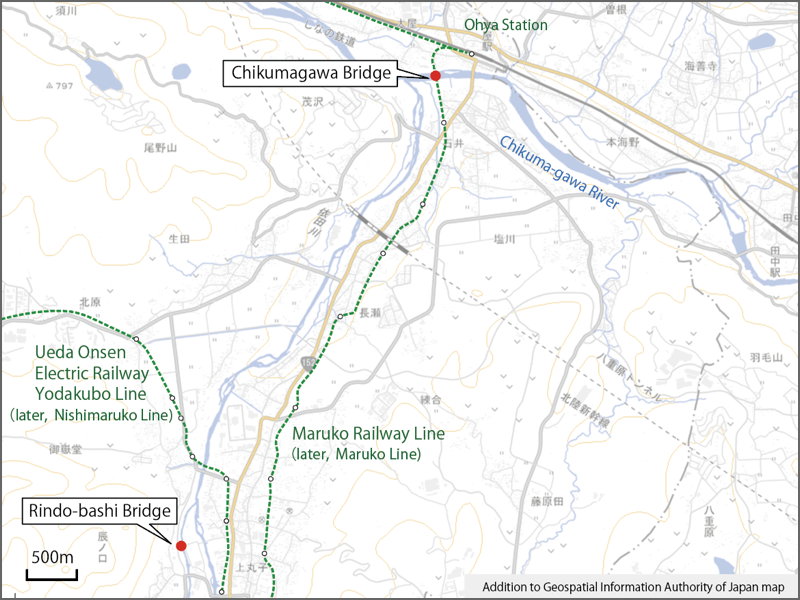
The name “Rindo-bashi” was given after the bridge was relocated; it had been called something else before that. How did the bridge come to be built at its current location?
(1) Manufacture and importation of iron bridges
This bridge was manufactured in Germany. The exact year has not been determined, but it was manufactured by Harkort Factory in Germany between 1890 and 1901, and imported.
Imported in the mid-Meiji period, the bridges were used by the Kyushu Railway. Kyushu Railways had invited German engineers when it started its business, so it seems that it decided to import German-made bridges. The bridges were designed to be joined with pins and bolts so that they could be easily assembled on site.
Later, the steel bridge was apparently dismantled around the end of the Meiji period and stored as a component. Or it may have been converted to another location at some point.
The Kyushu Railway was nationalized in 1907.
(2) Transfer to Maruko Railway
From here, I am talking about Nagano Prefecture.
As shown in the map above, the Maruko Railway built a railroad from Ohya to Mariko-machi in 1918 (Mariko-machi Station is just a little off the map). The Maruko Railway was established mainly by silk manufacturers, and its primary purpose was to transport raw silk. It crossed the Chikuma River by a bridge and connected Ohya Station and Mariko-machi Station.
In 1926, Ueda Onsen Electric Railway laid the Yodakubo Line at the location shown in the figure.
In 1928, 10 years after the opening of the Maruko Railway, the Chikuma River was flooded.
A part of the bridge was washed away by flood damage from the Chikuma River.
In order to deal with the situation as quickly as possible, the Chikumagawa bridge was rebuilt using two sets of steel bridges that had been stored by Kyushu Railway (which had become Japan National Railways at that time).
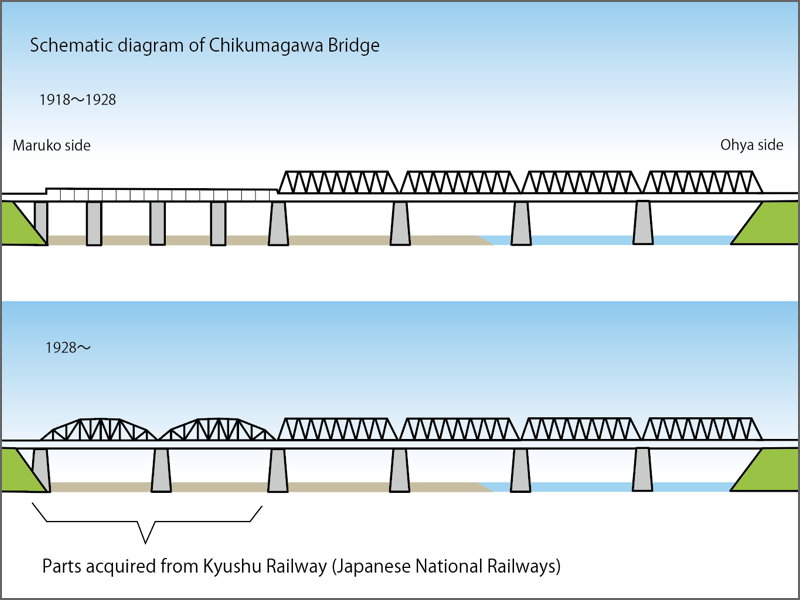
The Chikumagawa Bridge before and after the repair is shown in the figure below. According to old photos, the four sets of bridges on the Ohya side were truss bridges, while the two sets on the Maruko side were plate girder bridges.
The plate girder part of the bridge was washed away by flooding, so a steel bridge acquired from Kyushu Railway (Japan National Railways) was installed.
In 1939, Ueda Onsen Electric Railway changed its name to Ueda Electric Railway.
Later, in 1943, the company merged with Maruko Railway and became Ueda Maruko Electric Railway.
At the time of the name change and merger, the Yodakubo Line was renamed the Nishimaruko Line (1939) and the Maruko Railway Line was renamed the Maruko Line (1943).
(3) Abolition of the Maruko Line – Renovation to the Ohishi Bridge
The Nishimaruko Line was discontinued in 1963 due to its poor performance and continuous losses after the World War II.
Following that, the Maruko Line was discontinued in 1969. (After its discontinuation, the Ueda Maruko Electric Railway was renamed Ueda Kotsu Co., Ltd.)
The Chikumagawa Railroad Bridge was converted to a road bridge, renamed “Ohishi-bashi Bridge,” and opened to traffic in 1971.
Because of its narrow width, it was the one side alternation traffic with the signal. I remember passing this road by car more than 30 years ago.
(4) Typhoon in 2001
On September 11, 2001, the bridge was partially damaged by rising water caused by a typhoon.
After discussions between Ueda City and Maruko Town, the Ohishi Bridge was decided to be replaced and opened as a two-lane road bridge in March 2004.
The steel bridge components were removed, but the bridge manufacturer which was in charge of dismantling the bridge, Shinshu University professor, and the Maruko Town Office, discussed the matter and decided to preserve the valuable components.
In 2006, Ueda City, Maruko Town, Sanada Town, and Takeishi Village merged to form (new) Ueda City.
(5) Construction of the Rindo-bashi Bridge
In 2004, a prefectural road was constructed on the west side of the Uchimura-gawa River, and local residents requested a bridge.
Then it was decided to build a bridge over the Uchimura-gawa River because a bridge is necessary in case of disasters and because it is easy to reach the general gymnasium and grounds on the east side of the Uchimura River.
The bridge would normally be used as a pedestrian bridge, but in the event of a disaster, it was designed to allow emergency vehicles and transport vehicles to pass through as well.
The bridge was completed on July 31, 2007 and named “Rindo-bashi Bridge".
The above is the rough flow of the bridge from its manufacture to its re-erection at the current location.
In the next article, we will actually see the Rindo-bashi Bridge.
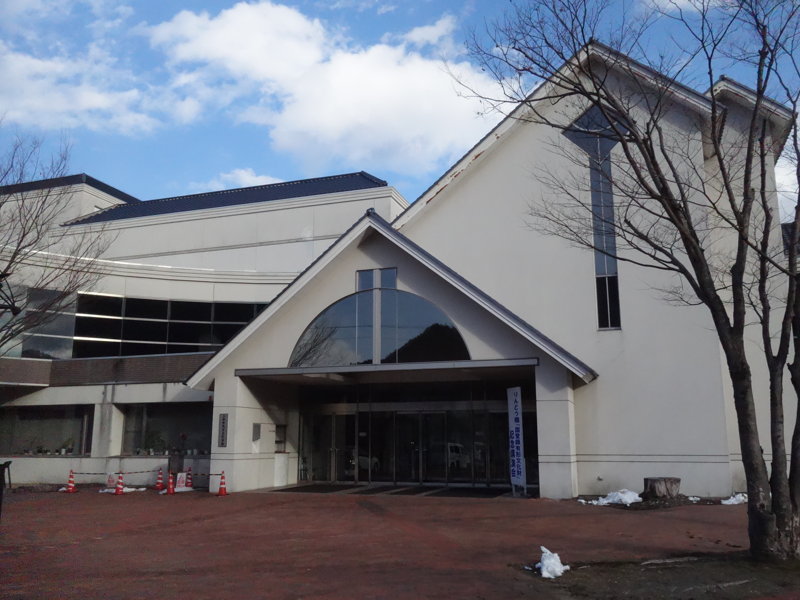
The last photo shows the Maruko Cultural Hall where the lecture was held.
[Reference]
“Rindo-bashi Bridge: Commemorative Lecture for Registration as a National Tangible Cultural Property" (Ueda City, Ueda City Board of Education / March 9, 2024)
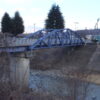
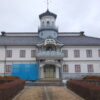
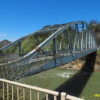
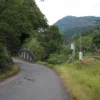
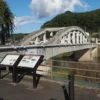
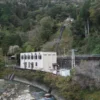
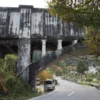
Discussion
New Comments
No comments yet. Be the first one!